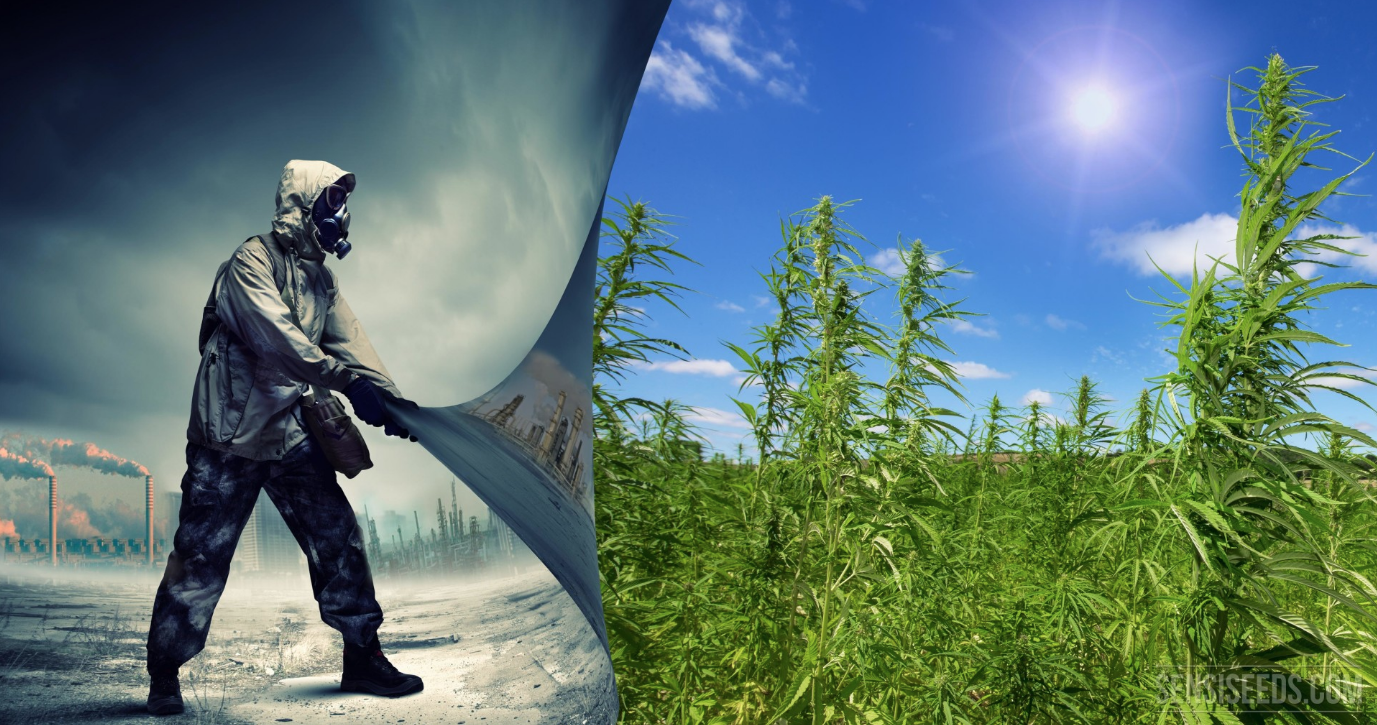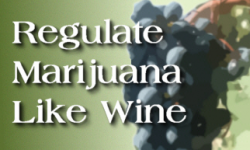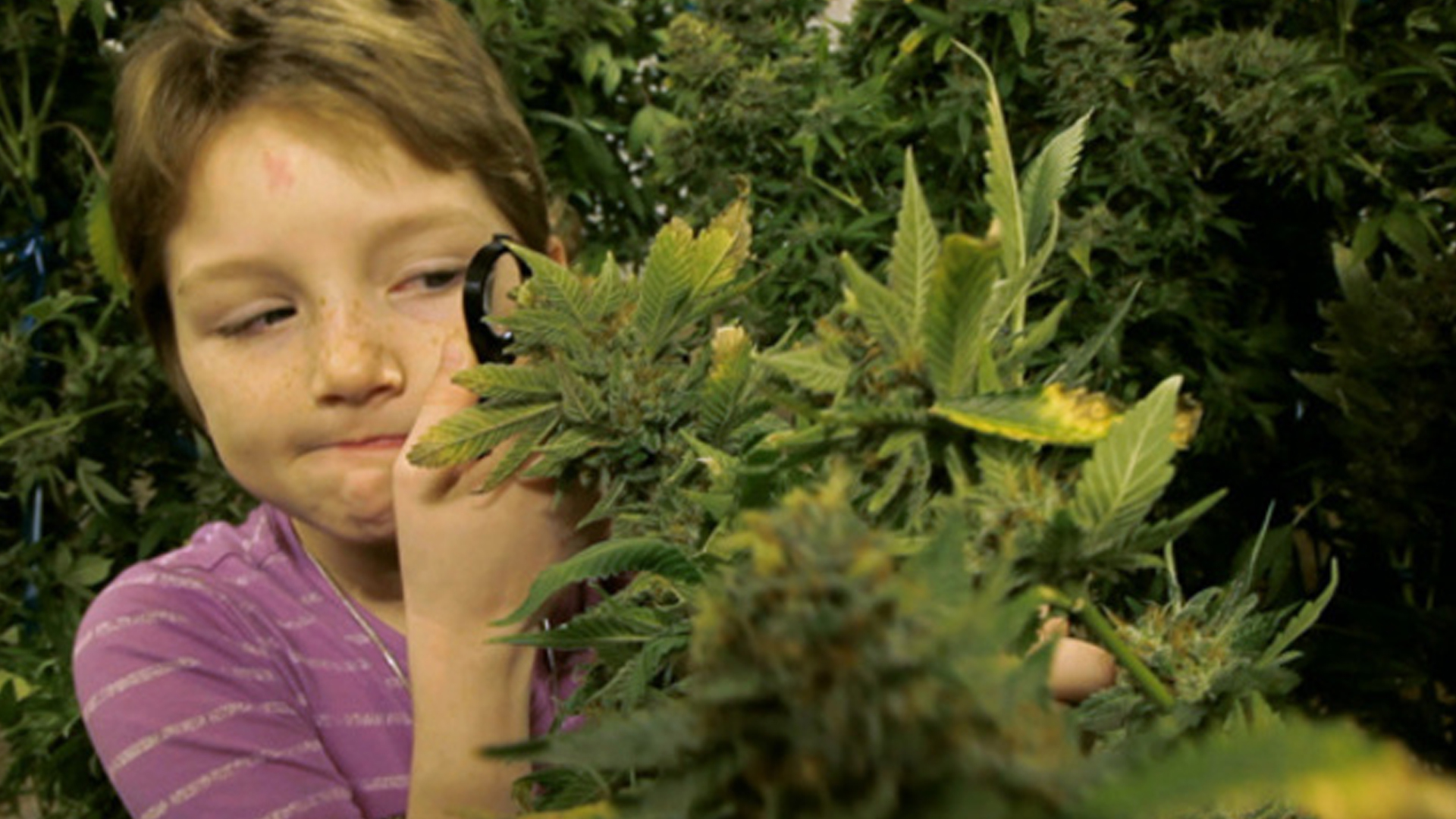4/20 – the Teen Pot Holiday
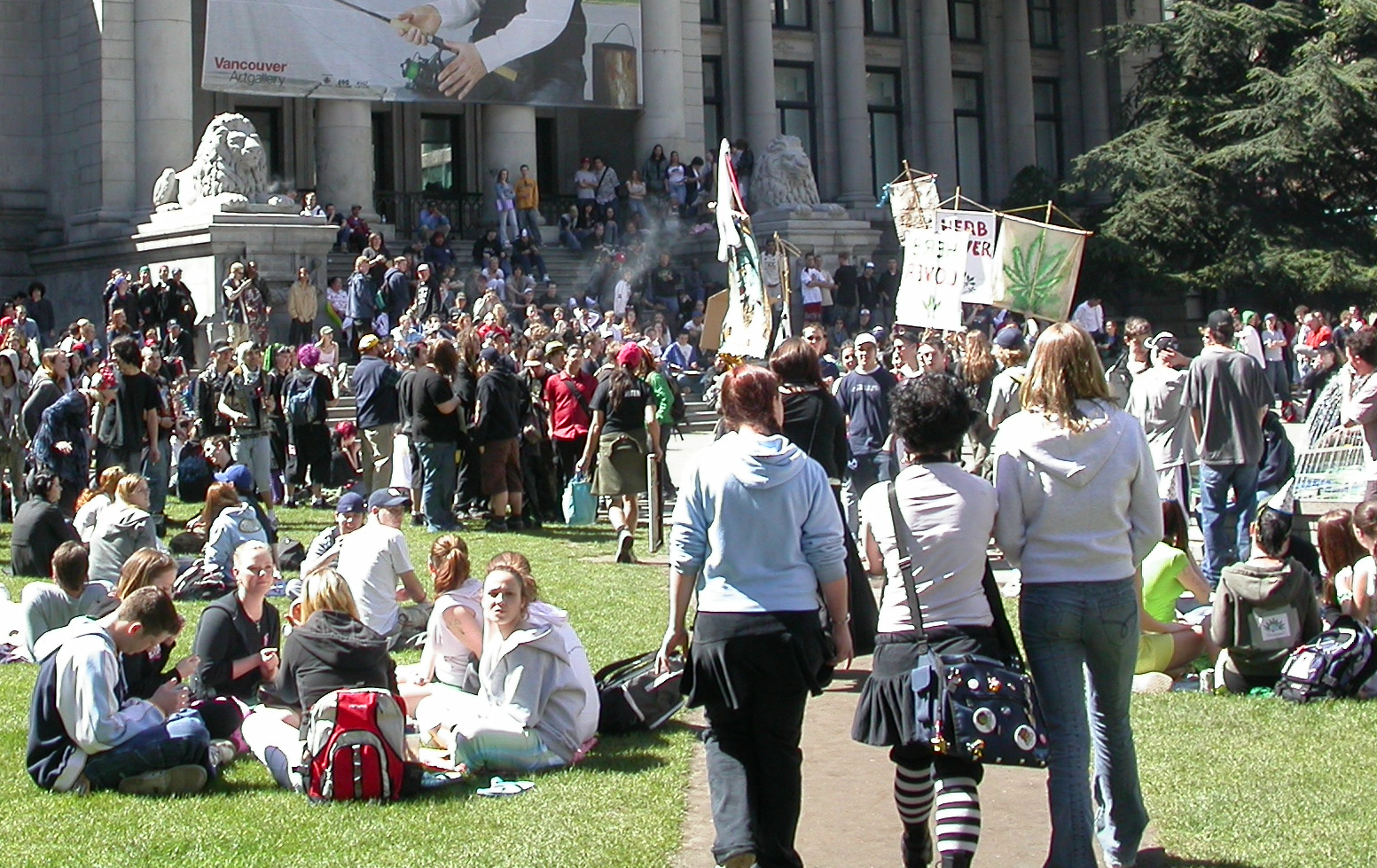
CANNABIS CULTURE – “It is a new form of tyranny by the old over the young. You have the adult with a cocktail in one hand and a cigarette in the other saying ‘you cannot’ to the child. This is untenable.”
– Margaret Mead, October 27th, 1969 (1)

Because of the massive amount of stigma foisted upon teen cannabis use these days, the role of teens in the legalization movement – and in the creation of the 4/20 holiday – have been downplayed or ignored by some activists.
This is a big problem, because the way the current pot cartel has been justified has been to argue that cannabis is a hard drug – it always harms teens – and it should be tightly regulated.
There is a tonne of evidence that this “pot is a hard drug” argument is just more reefer madness (2) – just slightly more sophisticated than the 1930s version – but instead of cops making the reefer madness argument, it’s academics, and instead of using it to justify a total prohibition, it instead is being used to justify tight regulations – like those which regulate alcohol and tobacco. Or tighter.
And some activists feel that – if they go along with this view, they too can become some of the lucky few to sell or grow pot, rather than (what I suggest we do) fight for the right of everyone to grow it and sell it, like we do with coffee and tea.
So rather than repeat my previous attempts to focus on the evidence of cannabis being an excellent drug for teens to help them avoid the suicides, drunk driving and alcohol and opiate overdoses they’re actually suffering from, (3) or rather than focus on the harm that cannabis prohibition does to teens such as being racially profiled (4) fined, jailed or sometimes killed during the enforcement of simple possession laws, (5) I would like to take the opportunity of this upcoming 4/20 holiday season to point out how teens themselves created the idea of 4/20, and how their contribution has helped make the 4/20 rally as big as it had become (up until COVID), and how hypocritical it would be to exclude them from a holiday that they actually had the biggest hand in creating.
The Waldos – the Inventors of 420
The first thing we should all do is look closely at the origin of the term “4/20” itself. If we are honest, we must admit it means 4:20 PM. As in “let’s meet up after our high school classes are over to get high”. In 1971, the concept of the number “420” as a code for cannabis smoking first appeared amongst a group of teens at San Raphael High School in San Raphael, Marin County, California – just across the Bay from San Francisco. As well as being the off-season headquarters of the Grateful Dead, San Raphael had a reputation for being a mecca of cannabis culture. The town was immortalized in Shel Silverstein’s 1972 pot poem “The Smoke Off” – a poem about a contest between the world’s greatest joint roller – a teen named “Pearly Sweetcake” – and the world’s most rapacious pot smoker. (6)
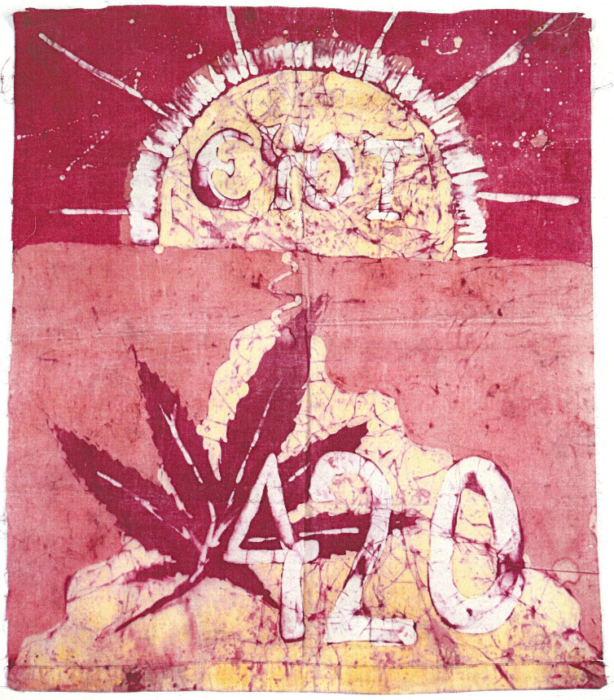 Image #2: https://sfevergreen.com/the-420-founding-fathers/
Image #2: https://sfevergreen.com/the-420-founding-fathers/
The group of teen 420 inventors was known as “the Waldos” because they hung out at “the wall” – a ledge in the center of the San Raphael High School campus – where they would engage with other students in witty banter. (7) The Waldo’s home page has the most accurate account of the origins of the now-world-famous numerical code for cannabis smoking;
“The time is 1971, The Waldos are sitting on the wall one day at San Rafael High School, making fun of everybody passing by as usual. A friend of the Waldos, Bill, came over to share something. He unfolded a treasure map explaining that his brother was in the U.S. Coast Guard stationed at the Pt. Reyes Peninsula north of San Francisco. He and some other U.S. Coast Guardsman were growing a patch of weed and it was ready for harvest, however they were now fearful that their commanding officer was onto them. Wanting to be safe and not wanting to get busted they decided to abandon the project, and gave Bill and his chosen friends permission to go harvest. Bill and fate picked The Waldos. A plan was made to search for the plants. School let out on a staggered flex schedule, typically at 3:10. Some of the Waldos had football practice for approximately one hour afterwards, so the plan was to meet at the campus statue of chemist Louis Pasteur at 4:20PM. During the day, every time they would see each other in the halls, they would remind each other of the meeting time and place by saluting with ‘420 Louis’. … The search went on for weeks. ‘Louis’ was dropped and the greeting was shortened “420”, which instantly became Waldo secret code for getting high. Teachers, coaches, administrators, parents and everyone else were oblivious. The Waldos could communicate anything about weed among themselves with just the tiniest inflection. The Waldos never found the weed patch, but the Waldos and other Waldo Safaris continued on.” (8)

Image #3: https://420waldos.com/about-the-waldos/
This term for pot smoking was picked up – first by the Grateful Dead and the “Deadheads” – their fans – and then by High Times magazine, which spread it to the rest of the world. (9)
What does the story of the Waldos signify? To this author, the story is evidence that – far from being harmed by their experience with cannabis, the Waldos found inspiration from it. Inspiration, not only to invent neologisms that would help them and others evade capture, but also to forge a new identity for their community, and eventually to give the global cannabis community a holiday of it’s own. The fact that “420” is a teen-invented term is a signal to activists that teens need championing – to insure they are included in any future legalization model, so that they too can enjoy herbal autonomy, and their past and future linguistic/conceptual contributions can continue to enrich the rest of the cannabis community.
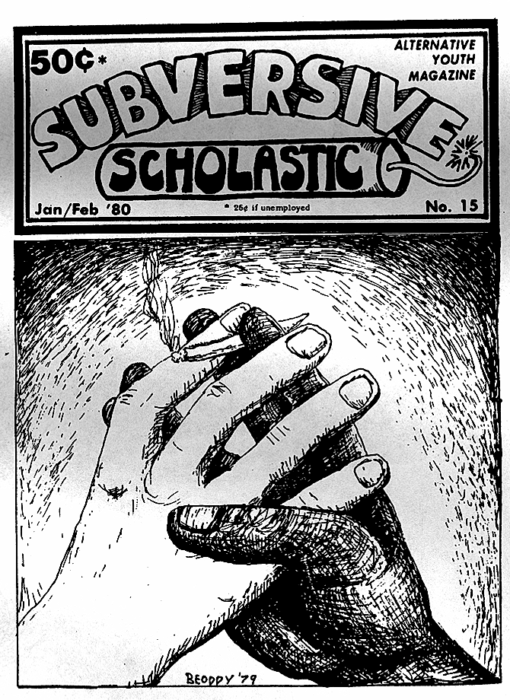
Image #4: Blacklisted News: Secret Histories from Chicago to 1984, Youth International Party, Bleecker Publishing, 1983, p. 237
Chris Lang – Teen Pioneer early 1990s Vancouver Pot Rally Organizer
The first really big pot rally of the 1990s was in April of 1993, and it was organized, primarily, by 17 year old high school student Chris Lang, who had assistance from The Patriotic Canadians for Hemp, LEAD, and “Friends International” – an educational/research organization formed by Janice and Leeroy Campbell back in 1983, which published the Hempfest Times newsletter.

Image #5: Hempfest Times #1, July 1993
Because of the attention brought to the pot issue by the Bill Clinton and Kim Campbell admissions and the killing of Daniel Possee in 1992 by the North Vancouver RCMP over a half ounce of weed, and because it was organized by a high-school student, the rally got a lot of attention from both of the local newspapers;
“Lower Mainland high-school students are being invited to play hooky at noon hour on Friday and join in a marijuana ‘smoke-in.’ Organizer Chris Lang, 17, a North Vancouver student, says he’s “doing it for the environment,” and claims he has distributed handbills to 20 schools. He’s hoping that about 1,000 school and college students will walk out of their classes and light up joints during the ‘legalization rally’ at the Vancouver Art Gallery. By facing arrest, he says, they’ll be supporting decriminalization of the drug. The rally is backed by pro-legalization groups Patriotic Canadians for Hemp, the League for Ethical Action on Drugs (LEAD) and Friends International. Vancouver school trustee Craig Hemer warned that students attending the rally would have to face the consequences of leaving class. ‘I cannot see the school system allowing students leaving schools,’ said Hemer. Burnaby drug counsellor Rob Axsen of non-profit group Odyssey 1 was also alarmed at the message the rally would send to teens. ‘I have worked with a lot of kids who are psychologically dependent on marijuana,’ he said. ‘It concerns me and I see it as exploitative.’ But Lang says his poster campaign is receiving strong support from students. ‘It’s always, like, ‘right on’ and ‘it can help the environment,’ ‘ he says. Last month’s adolescent health survey of B.C. school teens found that only 25 per cent of Grade 10 to Grade 12 students had ever smoked marijuana. But Simon Fraser University criminology professor Neil Boyd says it’s probably more like 50 per cent. ‘The gateway drugs are tobacco and alcohol,’ says Boyd, who wants marijuana laws relaxed. Boyd links the teenagers’ actions to a revival of ’60s hippie values. In Ottawa, Skeena MP Jim Fulton is soon to table a private member’s bill to legalize marijuana. Vancouver police say they’re aware of the rally.” (10)
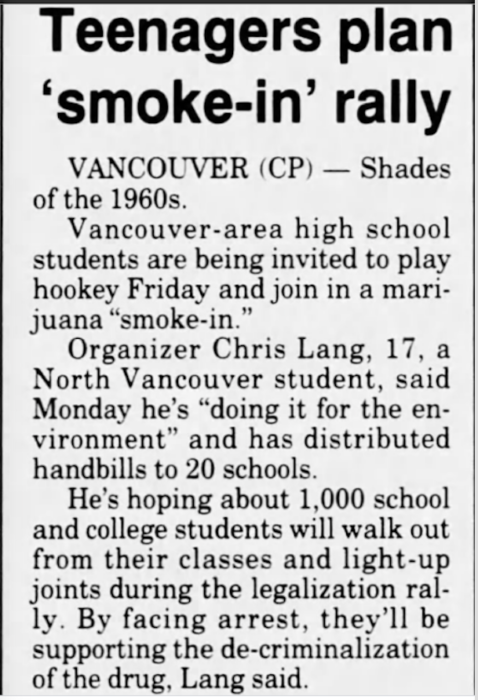
Image #6: Calgary Herald, Calgary, Alberta, April 21st, 1993, p. 2

Image #7: https://theprovince.com/news/local-news/throwback-student-smoke-in-pushed
“West Vancouver Grade 12 student Chris Lang will be among the 1993 crime statistics. He goes to court in July on a possession charge after allegedly being found with one joint in his pocket by Vancouver police. Lang, 17, is so angry that he may end up with a criminal record that he is helping to organize a Vancouver rally this Friday at the Vancouver Art Gallery to try and get marijuana decriminalized.” (11)
The rally went well. It was the first time since the Grasstown Riot that thousands of people gathered in Vancouver to protest for legalization. This time, the cops hung back and the media provided a fair amount of positive coverage.
 Image #8: High Society – Rally Dos and Donts [2of5] https://www.youtube.com/watch?v=l1EGVePW21s
Image #8: High Society – Rally Dos and Donts [2of5] https://www.youtube.com/watch?v=l1EGVePW21s
The Globe & Mail revealed that Chris Lang was involved with an earlier September 1992 rally. Apparently between that 1992 rally and this 1993 rally, Lang was arrested for simple possession – and when Kim Campbell and Jean Charest (the two front-runners for the Conservative Party top spot) then admitted to smoking it, that was the last straw;
“He had organized a smoke-in last September, attended by about 200 people, but decided to organize this rally after Conservative leadership candidates Kim Campbell and Jean Charest admitted they had smoked marijuana. ‘O yeah, we timed it,” Mr. Laing (sic) said with a knowing smile as the crowd began to gather on the steps of the gallery.” (12)
Hempology 101: The Young Organizers of the First 4/20 rally
On April 17th, 2019, the website “Vancouver Is Awesome” did an in-depth story about Danna Rozek O’Donnell – one of the two main organizers of the first 4/20 rally:
“The first 4/20 was held at Victory Square on Thursday, April 20, 1995. It was the brainchild of Danna O’Donnell (nee Rozek) and Cindy Lassu. O’Donnell is originally from Ontario and moved to Vancouver in early 1994, lured by the city’s cannabis culture. She and Lassu were working at the Hemp BC store, which sold cannabis-related paraphernalia, when the idea for a pot protest was hatched. ‘I was pretty young at the time and I wanted to get together with like-minded people to do some activism,’ said. ‘I thought we could come up with some kind of group… so I kind of organized a meeting night inviting people to come over and see what we could come up with and we decided to form a group. We came up with the name Hempology 101 and our motto was going to be ‘Legalization through education.’’ O’Donnell said the group planned to host events, hand out pamphlets and organize marches advocating for the legalization of marijuana, and came up with the idea to hold an event on April 20 (4/20).” (13)
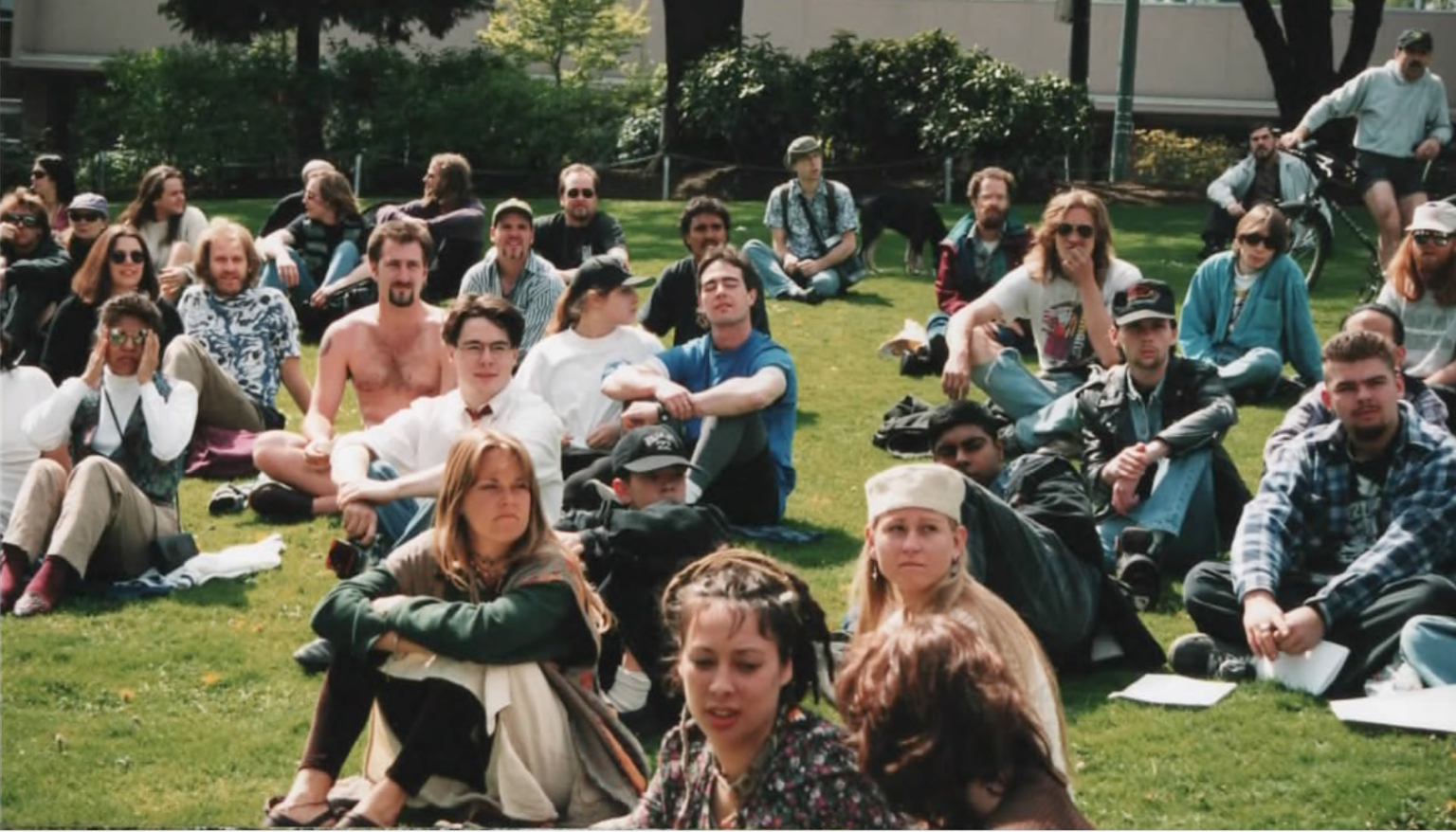
Image #9: The first 420 rally, April 20th, 1995, Victory Square, Vancouver. Photo archive of Cannabis Culture.
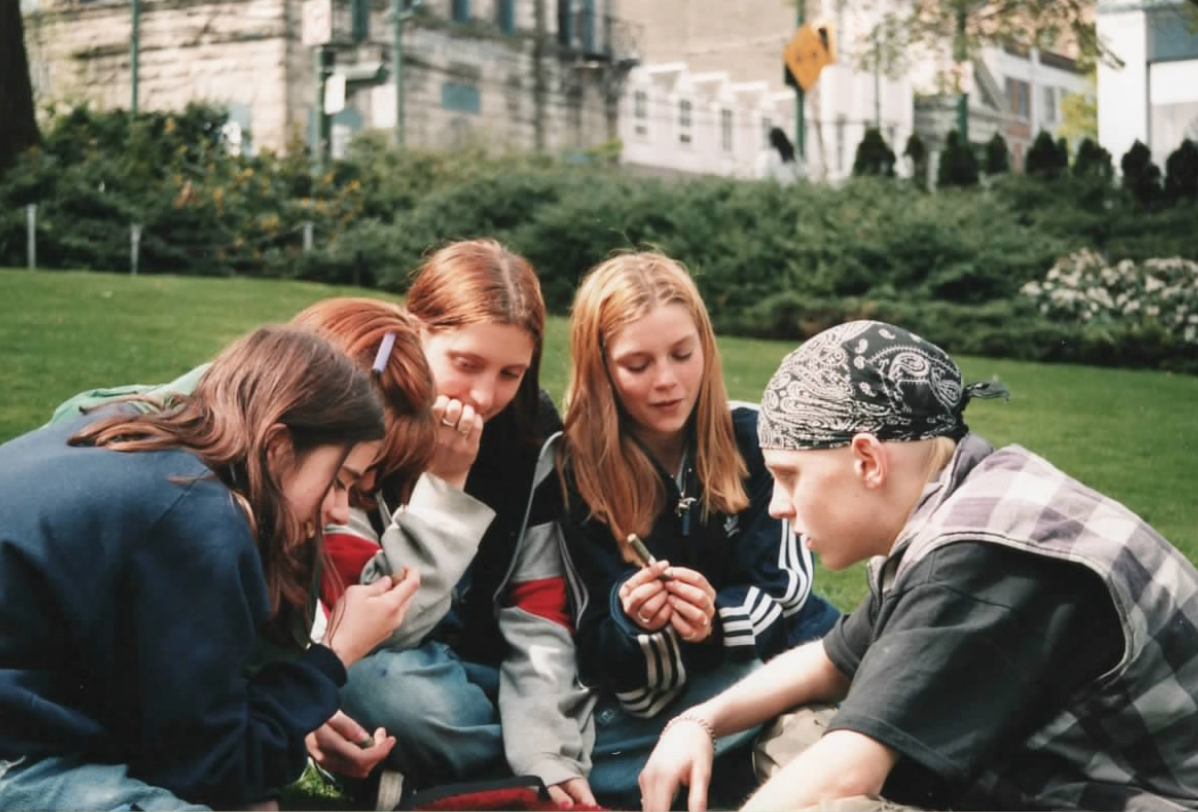
Image #10: The first 420 rally, April 20th, 1995, Victory Square, Vancouver, archive of Cannabis Culture

Image #11: Danna Rozek, circa 1995, archive of Cannabis Culture

Image #12: Cindy Lassu, circa 1995. Photo archive of Cannabis Culture

Image #13: Hempology 101 organized rally, November 15th, 1995. Photo archive of Cannabis Culture (author at back row centre, in the blue checkered jacket).
I myself arrived in Vancouver from Edmonton, Alberta in September of 1995. I attended many of the Hempology 101 classes, and then took them over in 1996 when Danna left Vancouver to live in the B.C. interior. I can assure the reader that there were many teens involved in Hempology 101 in 1995 and 1996 – in both planning and postering and attending and performing aspects of rally organization.

Image #14: Hemp BC, circa 1995, Cannabis Culture photo archive.
Hemp B.C. itself was operated by some a bunch of young employees. One of them, assistant manager (and 17 year old) Hilary Black, would go on to start a pot revolution of her own.
Hilary Black: Teen Med Pot Pioneer
In the year 2000, a reporter from the Vancouver Sun pointed out how Hilary Black got her start as an under-age activist/employee at Marc Emery’s Hemp BC, which then transformed her into an under-age pot dealer:
“She got her start working a summer job as a 17-year-old at Marc Emery’s former Hemp BC store. Sometimes the elderly or the sick would telephone or walk timidly into the Hastings Street site as though visiting a foreign planet. Tell me about marijuana, they would ask. The first person she gave pot to was an elderly woman, bed-ridden with arthritis, says Black. She went to the woman’s home and climbed onto the bed. They talked and shared a joint. Ten minutes later, the woman was able to get out of bed and make them tea. She was laughing and crying, and she thought this striking dark-haired teenager was some sort of angel. ‘For a 17- or 18-year old girl, it was really, really inspiring to me … that there was something worthy I could do that wasn’t being done.’” (14)
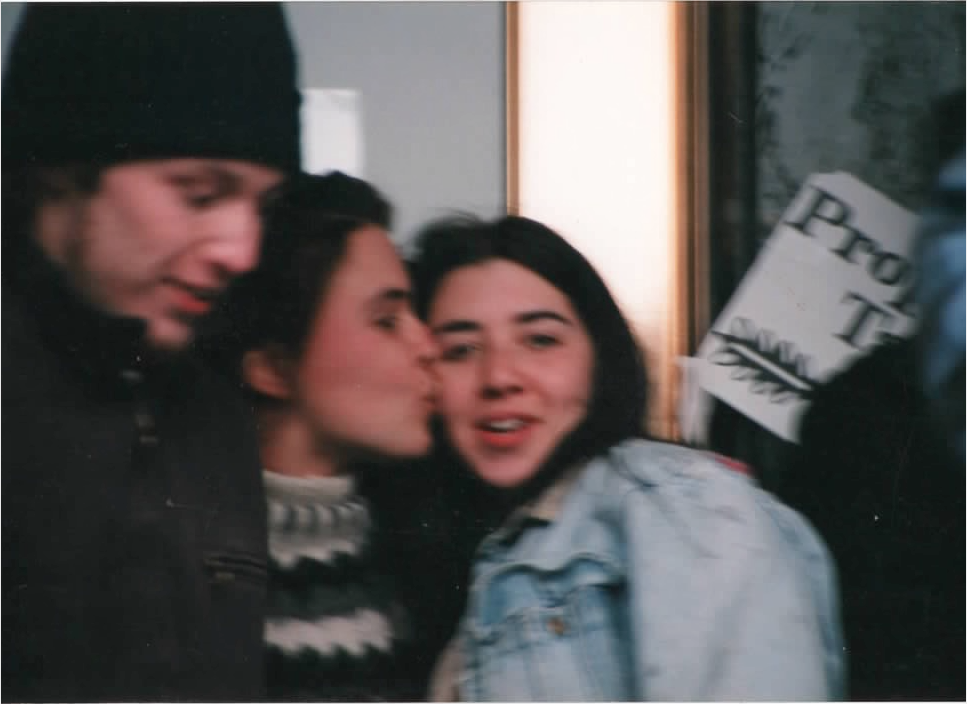
Image #15, Hilary Black, centre, at the February 3rd, 1996 protest of the raid on Hemp BC at Vancouver City Hall. Cannabis Culture photo archive.
In a September 1995 article in the Vancouver Province, Hemp BC assistant manager Hilary Black was quoted as the resident expert on the medicinal qualities of cannabis;
“‘People who have cancer and get (nauseated) from chemotherapy use it to settle their stomach … and it relieves the pressure on the eyes in glaucoma patients.’ Black said toking up has rid her of migraines and done wonders for her asthma. ‘Pot relaxes you and opens up your capillaries, so it’s great for headaches. And it’s legendary for relieving PMS. I’ve had friends who’ve cut up a bud, mixed it with alcohol and applied it to herpes sores, and they’ve cleared right up.’ Besides easing pain for AIDS patients, pot helps them eat. ‘We all know smoking up gives you the munchies, so it really helps increase their appetite.’” (15)
The very next month, Marc Emery announced the beginning of the medical marijuana movement in Canada – basically bragging about his employee Hilary Black’s side hustle – the Vancouver Medical Marijuana Cooperative – without naming it or her directly;
“Mark (sic) Emery, owner of the popular pot store Hemp B.C. in Vancouver, says the decision is part of the turning tide for pot. ‘Ultimately it’s not the politicians that are legalizing it, it’s the police officers, the courts and the public,’ said Emery. ‘We deal with lots of people who are using pot medicinally – we provide it for them.’” (16)
 Image #16: “Pot-for-pain plea heard”, The Province, Vancouver, British Columbia, Canada, October 4th, 1995, p. A5
Image #16: “Pot-for-pain plea heard”, The Province, Vancouver, British Columbia, Canada, October 4th, 1995, p. A5
The “we” in “we provide it for them” was Hilary Black. This is months before any other Canadian pot activist has claimed to have sold medical pot. Black was also the first pot activist in Canada to produce med pot literature – a two page handout from her first organization, the VMMC – the Vancouver Medical Marijuana Cooperative. This organization was run by her and her associate Theo – another teen Vancouver drugpeace activist.

Image #17: Vancouver Medical Marijuana Cooperative, circa 1995
Black would later move to Holland and then California in order to study the art of medical marijuana distribution from the pioneers of those countries, before returning to Vancouver in 1997 to transform the VMMC into the BCCCS – the BC Compassion Club Society. Black was also the first med pot dispensary activist to get national news coverage in Canada, and took the lead in introducing the above-ground med pot economoy to Canadians. (17)

Image #18: “Hilary Black talks marijuana in 1997” https://www.cbc.ca/player/play/1347333699546
Arguably, if Marc Emery had bought into the stigma-laden idea that teens should be kept away from pot, he would not have hired the 17-year-old Hilary Black, she would not have gone on to destigmatize medical cannabis and pioneer the entire Canadian med pot industry, and it would all probably still be illegal today, or at the very least, the industry would have had far less participation from – and would have been shaped with far less influence of – members of the general public. Teenagers not only gave the world the 420 culture, they gave regular Canadians a chance at access to the legitimate cannabis economy.
2002 Senate Report – Urged Canada to Include Teens In Legalization
On September 4th, 2002, the most comprehensive English-language report on cannabis ever commissioned by a government was relased. “CANNABIS: OUR POSITION FOR A CANADIAN PUBLIC POLICY” was the title, and the authors were the Senate Special Committee on Illegal Drugs. It has since come to be known as the Nolin Report, as Senator Pierre Claude Nolin was the chairperson overseeing it.
The Senate recommended amendments to the Controlled Drugs And Substances Act, aiming
“To permit persons over the age of 16 to procure cannabis and its derivatives at duly licensed distribution centres…” (18)
The Senate repeated this advice, in different language, on page 52 of the summary – where the Senate wanted cannabis to be treated as a softer drug than alcohol or tobacco, in that 16 year olds could buy it on their own:
“The resident must undertake not to distribute to persons under the age of 16 . . .” (19)
The Senators heard from Canadians across the country when gathering information to write their report – including this author – and many Canadians spoke out about the injustice that the experience of pot prohibition had been for teens. This is why they were explicit in including teens in legalization.
In 2009, Statistics Canada came up with a report that pointed out that nearly a quarter of those Canadians arrested for cannabis crimes were teens:
“Of the over 90,000 persons accused of a drug offence in 2007, youth accounted for 19%, although this varied by type of drug. Youth comprised 24% of those accused of cannabis offences, compared to 5% of all those accused of cocaine offences.” (20)

Image #19: https://www150.statcan.gc.ca
Even post legalization, some jurisdictions in the United States that have legalized cannabis for adults have seen an increase in racial profiling for teens that were left out of legalization:
“A Colorado Health Department survey found there wasn’t a huge racial difference in who smokes pot. But the marijuana arrest rate for white 10- to 17-year-olds fell by nearly 10 percent from 2012 to 2014, while arrest rates for Latino and black youths respectively rose more than 20 percent and more than 50 percent.” (21)
Image #20: https://pot-facts.ca/pot-arrests-of-black-youth-went-up-after-pot-legalization-in-colorado/
Post Legalization/Cartelization Pot Activism Must Include Legalization for Teens
Being a pot activist in the 21st century involves avoiding treating cannabis like a hard drug, and advocating for the right of teens to have safe, legal access to pot. As was pointed out by this author on Cannabis Culture back in 2018, right before legalization/cartelization was put into place:
“The key to saving the world at this moment is to shift away from the synthetic economy and take steps towards the natural economy. And the way to do that is to allow teens to smoke pot, and require farmers to grow it organically and ethically. Then scapegoating will end and the world can live as one and hemp ethanol can replace fossil fuels and the economy will be spread out amongst hundreds of thousands of farmers and gardeners instead of a few banks and chemical companies. Wait. What? How does fighting for teen pot access lead to saving the world? Let me break it down for you. The three reasons for activists to focus on ending age limits and adopting fair trade, organic standards in the new emerging legal cannabis economies are: Doing so might reduce teen suicides, car crashes and drug overdoses. Doing so would result in safer cannabis instead of industry-killing testing protocols Doing so would allow poor people and middle class people to participate in the economy and industrial hemp regulations to relax enough to allow it to compete with fossil fuels.” (22)
Obviously, this won’t be an easy task. The prohibitionists have pushed their “assassin of youth” narrative for at least 90 years, and it continues to this day. (23) Today’s pot activist will have to familiarize themselves with the facts surrounding cannabis use by young people (24) as well as understanding why cannabis is more similar to other soft drugs like coffee beans rather than hard drugs like tobacco or alcohol. (25)
Ultimately, it will be on this issue – how we treat the youngest members of the community – that will define whether or not we are activists or mearly opportunists, and whether or not the human race will one day live freely and in harmony with each other and with mother nature, or if we will instead remain oppressed and enslaved. One thing is for certain. Teens have earned the right to protest for their pot rights along side adults – especially at 4/20, the holiday they themselves invented.
Citations:
1) “Marijuana Should Be Legal, Margaret Mead Tells Senate,” Chicago Tribune, Chicago, Illinois, Oct. 28th, 1969, p. 20
2) https://pot-facts.ca/multiple-reports-indicate-no-rise-in-psychosis-accompanies-increases-in-pot-use-rates/
https://pot-facts.ca/teen-marijuana-use-not-linked-to-later-depression-lung-cancer-other-health-problems-research-finds/
“After controlling for potential confounding variables such as alcohol, tobacco, and hard drug use, socioeconomic status, whether the young men had health insurance, and early health status (prior to marijuana use), findings from this sample indicated that chronic marijuana users were not more likely than late increasing users, adolescence-limited users, or low/nonusers to experience several physical or mental health problems in their mid-30s. In fact, there were no significant differences between marijuana trajectory groups in terms of adult health outcomes, even when models were run without controlling for potential confounds. This is particularly striking given that men in the early onset chronic group were using marijuana (on average) once per week by late adolescence and continued using marijuana approximately 3– 4 times a week from age 20 to 26 years.”
“Chronic Adolescent Marijuana Use as a Risk Factor for Physical and Mental Health Problems in Young Adult Men,” Jordan Bechtold, University of Pittsburgh School of Medicine, Theresa Simpson and Helene R. White, Rutgers University, Psychology of Addictive Behaviors, © 2015 American Psychological Association, August 3rd, 2015, Vol. 29, No. 3, 552–563, p. 557
https://www.apa.org/pubs/journals/releases/adb-adb0000103.pdf
3) https://pot-facts.ca/teens-need-legal-access-to-pot-cafes-to-help-avoid-drunk-driving-suicide-and-drug-overdoses/
https://www.cannabisculture.com/content/2017/01/20/wont-somebody-think-children/
4) https://pot-facts.ca/pot-arrests-of-black-youth-went-up-after-pot-legalization-in-colorado/
5) https://www.cannabisculture.com/content/2021/05/18/killed-over-pot/

https://www.cannabisculture.com/content/2021/05/18/killed-over-pot/

https://www.cannabisculture.com/content/2021/05/18/killed-over-pot/

https://www.cannabisculture.com/content/2021/05/18/killed-over-pot/
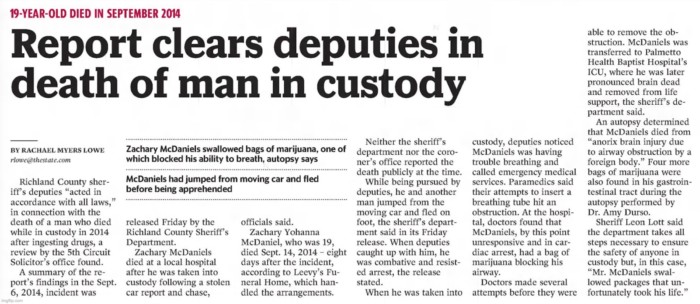
https://www.cannabisculture.com/content/2021/05/18/killed-over-pot/

https://www.cannabisculture.com/content/2021/05/18/killed-over-pot/

https://www.cannabisculture.com/content/2021/05/18/killed-over-pot/
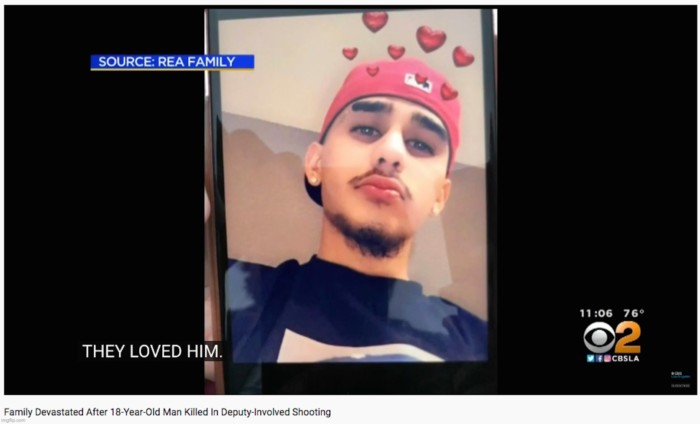
https://www.cannabisculture.com/content/2021/05/18/killed-over-pot/

https://www.cannabisculture.com/content/2025/01/27/killed-over-pot-part-2-why-was-kentrail-small-killed/




https://www.cannabisculture.com/content/2025/01/27/killed-over-pot-part-2-why-was-kentrail-small-killed/

https://www.cannabisculture.com/content/2025/01/27/killed-over-pot-part-2-why-was-kentrail-small-killed/

https://www.cannabisculture.com/content/2025/01/27/killed-over-pot-part-2-why-was-kentrail-small-killed/

https://www.cannabisculture.com/content/2025/01/27/killed-over-pot-part-2-why-was-kentrail-small-killed/

https://www.cannabisculture.com/content/2025/01/27/killed-over-pot-part-2-why-was-kentrail-small-killed/
6) The Smoke Off, Shel Silverstein, 1972 https://www.youtube.com/watch?v=ohFHsOBuLc4
“Now in the laid back California, town of sunny San Rafael. Lived a girl named Pearly Sweetcake, you probably knew her well. She was stoned fifteen, of her eighteen years. And her story was widely told, That she could smoke em faster, than anyone could roll.”
https://lyricsplayground.com/alpha/songs/t/thegreatsmokeoff.html
7) https://420waldos.com/more-waldos-culture/
8) https://420waldos.com/point-reyes-searches/
9) https://big.assets.huffingtonpost.com/First420story.jpg
https://www.history.com/news/the-hazy-history-of-420
For an alternate history (involving a different teen from San Rafael High School), check out: https://guyperry.wixsite.com/beebmarcos420/the-420-truth
10) “Student smoke-in pushed”, The Province, APRIL 21, 1993, JOHN BERMINGHAM https://theprovince.com/news/local-news/throwback-student-smoke-in-pushed
11) “Ex-officer takes pot not for a high but to lower blood pressure, he says”, The Vancouver Sun, Vancouver, British Columbia, Canada, April 21st, 1993, pp. 17, 20
12) “Memories of riot go up in smoke”, Globe & Mail, April 25th, 1993, pp. 1, 5
13) “Vancouver’s 4/20 celebrates a quarter century of freeing the weed – Event’s original organizer recalls 4/20’s humble beginnings,” Jessica Kerr, Apr 17, 2019
https://www.vancouverisawesome.com/courier-archive/news/vancouvers-420-celebrates-a-quarter-century-of-freeing-the-weed-3097823
14) “TALES OF PROHIBITION”, Vancouver Sun, May 13, 2000, pp. 18-19. See also: “Founder Hilary Black was only a teenager when she took her first step towards eventually changing the course of cannabis laws in Canada.” How compassion club filary Black changed the course of cannabis law in Canada https://www.cbc.ca/radio/thecurrent/hilary-black-b-c-cannabis-compassion-1.4869239
15) “Soother or killer?”, The Province, Vancouver, British Columbia, Canada, Sept. 24th, 1995, p. A4
16) “Pot-for-pain plea heard”, The Province, Vancouver, British Columbia, Canada, October 4th, 1995, p. A5
17) Hilary Black talks marijuana in 1997, Hilary Black of the B.C. Compassion Club Society and Health Canada’s Bruce Rowsell speak to Brian Stewart about marijuana on The National Magazine on July 24, 1997.
https://www.cbc.ca/player/play/1347333699546
18) “CANNABIS: OUR POSITION FOR A CANADIAN PUBLIC POLICY REPORT OF THE SENATE SPECIAL COMMITTEE ON ILLEGAL DRUGS,” CHAIR PIERRE CLAUDE NOLIN DEPUTY CHAIR COLIN KENNY SEPTEMBER 2002, p. 624
https://chodarr.org/sites/default/files/chodarr0335.pdf
https://www.druglibrary.org/schaffer/library/studies/canadasenate/table_of_contents.htm
https://chodarr.org/search/node/Senate
http://publications.gc.ca/site/eng/246855/publication.html
19) Ibid, SUMMARY REPORT, p. 52
https://sencanada.ca/content/sen/Committee/371/ille/rep/summary-e.pdf
20) “Trends in police-reported drug offences in Canada,” May 2009
https://www150.statcan.gc.ca/n1/pub/85-002-x/2009002/article/10847-eng.htm#a4
21) “As Adults Legally Smoke Pot In Colorado, More Minority Kids Arrested For It,” June 29, 2016
https://www.npr.org/2016/06/29/483954157/as-adults-legally-smoke-pot-in-colorado-more-minority-kids-arrested-for-it
22) “Soft Drugs & The Shift to Natural Economics,” David Malmo-Levine, July 23, 2018
https://www.cannabisculture.com/content/2018/07/23/soft-drugs-the-shift-to-natural-economics/
23) “Fake News Coming from CBC on Cannabis and Teens – Can Anything Be Done About It?” David Malmo-Levine, December 11, 2019
https://www.cannabisculture.com/content/2019/12/11/fake-news-coming-from-cbc-on-cannabis-and-teens-can-anything-be-done-about-it/
24) “Kids and Cannabis: 9 Reasons To Not Be Afraid of Young People Using Marijuana,” David Malmo-Levine, April 20, 2016
25) “Cannabis vs Caffeine: Which is Safer, a Cup of Coffee or a Puff of Weed?” David Malmo-Levine, April 20, 2016
https://www.cannabisculture.com/content/2016/04/20/cannabis-vs-caffeine-which-is-safer-a-cup-of-coffee-or-a-puff-of-weed/


